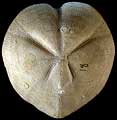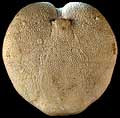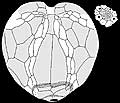The Echinoid Directory
Paramicraster Maczynska, 1968, p. 154
| Diagnostic Features |
|
|---|---|
| Distribution | Upper Cretaceous (Santonian to Campanian), Europe. |
| Name gender | masculine |
| Type | Micraster coranguinum var. latior Rowe, 1899, p. 539 [= Spatangus coranguinum Leske, 1778 p. 221] by original designation. |
| Species Included |
|
| Classification and/or Status |
|
| Remarks |
|




